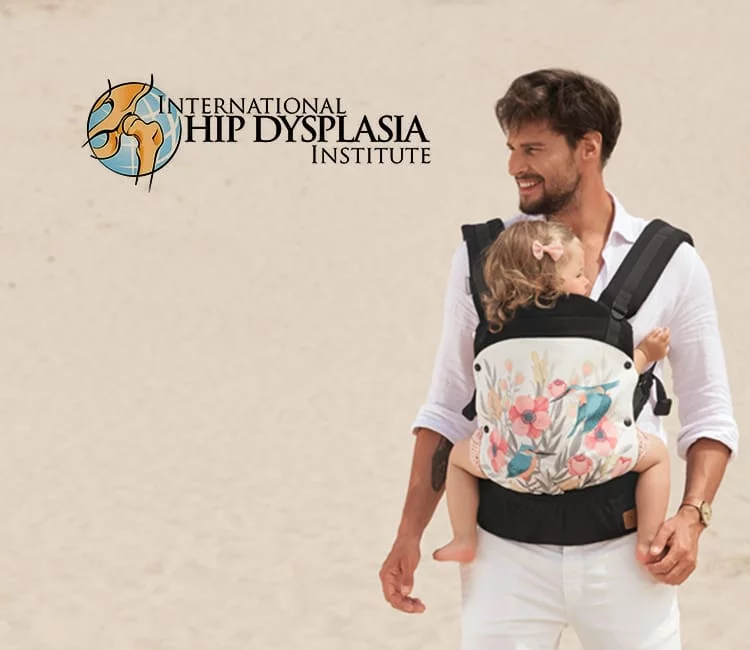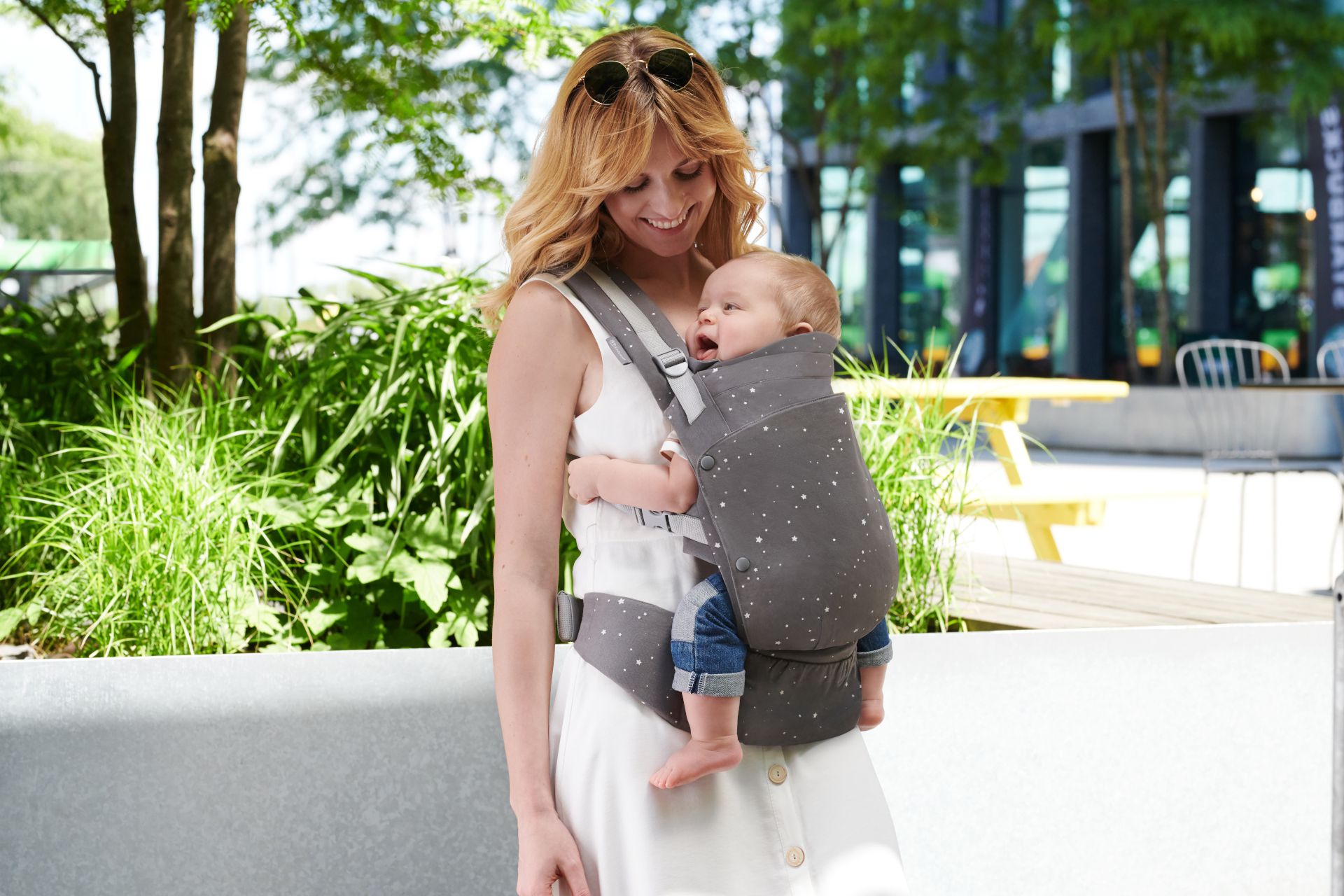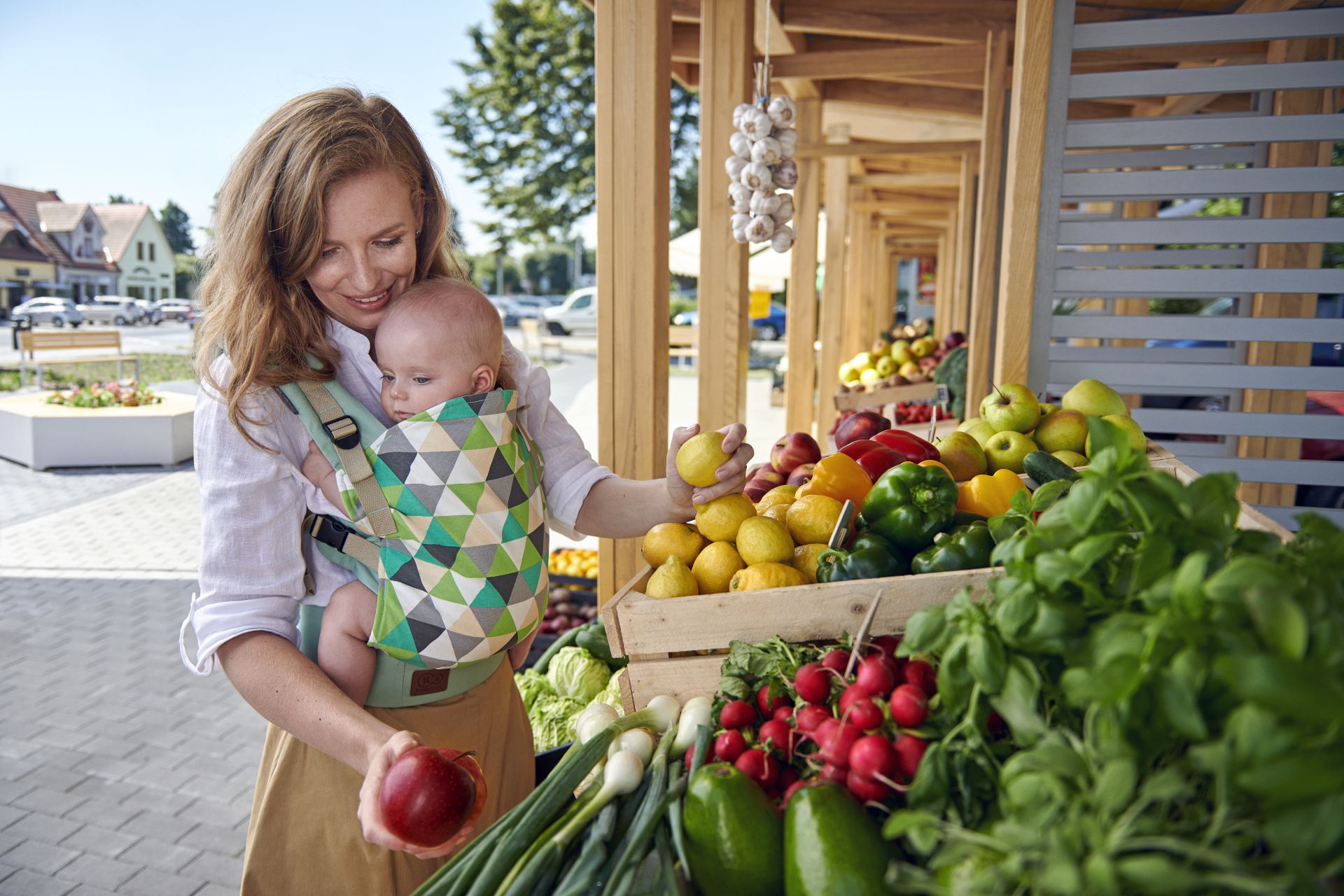What is the HIP Dysplasia Institute certificate

Being a parent isn't easy. Before the child learns to walk, mum and dad have to face many months of constant carrying and rocking. When your older toddler still needs to be carried and your back hurts, an ergonomic carrier is a lifesaver. However, parents have many questions, the most important of which is, "Are ergonomic carriers safe?" Due to the fact that all Kinderkraft carriers are ergonomic and have been approved by the independent International Hip Dysplasia Institute (IHDI) in terms of the baby being in a safe position, we decided to discuss the International Hip Dysplasia Institute certificate and explain what exactly it is.
Ergonomic carrier – what does this mean?
Let's start with the most important thing – what an ergonomic carrier is. First of all, it's a soft carrier that evenly distributes the child's weight without awkwardly bending the joints or forcing the child into an unnatural position. In ordinary, stiff carriers, the toddler's weight rests on their groin, which is detrimental to the development of the baby's hips. Their spine also suffers (as a result of being in a forced position that's unnatural for small children – a straight back). Unlike non-ergonomic carriers, ergonomic ones enable the toddler to adopt a safe position, which is:
- legs in the shape of the letter "M",
- pelvis tucked and the back rounded,
- body weight distributed evenly.
In addition, ergonomic carriers, such as NINO, allow babies to be carried on the stomach with their back to the world. Older kids can be worn on the back, facing the world.
Warning! Never carry your baby on your stomach with them facing the world! In this position, the toddler's body weight is poorly distributed, which is bad for their posture, as well as hip and spine development!
In addition to the above advantages of ergonomic carriers, the child also has a sense of security (because they're close to the parent). The parent has their hands free to shop, take care of another child, or make coffee.

Ergonomic baby carrier – which one should you choose?
If you already know that you want to buy an ergonomic carrier, all that's left is deciding which one to choose. We recommend that you look at not only the quality of the materials and the careful workmanship, but also the possibility of ensuring a safe position for your child.
Ergonomic carriers, in which the child's legs can be positioned correctly, are often certified by the International Hip Dysplasia Institute.
International Hip Dysplasia Institute certificate
The International Hip Dysplasia Institute (IHDI) is a non-profit organisation whose goal is to improve the health of people who suffer from hip dysplasia. IHDI is heavily involved in educating patients, their families, doctors and parents.
Putting children in non-ergonomic carriers too early may result in abnormal development of the hips – IHDI recommends carrying children in ergonomic carriers and slings that can ensure the correct positioning of the hips, and so their proper development.
Proper hip development is very important, particularly until the age of six months. This is why it's necessary to make sure that the child is properly carried and has correct leg positioning throughout this most-intense period of development.
IHDI checks all products that may adversely affect the motor development of children's hips. These carriers, in which the child can be in the correct position, are certified by the International Hip Dysplasia Institute.

Ergonomic carriers – what are they?
All Kinderkraft carriers are ergonomic. This means that the child can be positioned and buckled up in such a way that they adopt a position that's safe for the development of the hips. In addition, they're made of soft materials, have a hood for very young children (to support the head – e.g. when the child falls asleep), and special elastics and Velcro, thanks to which it's easier to adjust to the age, height, and weight of the child and the parent. They also have the above-mentioned International Hip Dysplasia Institute certificate.
Carriers such as MILO also have a number of extras for parents, such as a pocket for small items in the panel, soft and wide straps that don't dig into the shoulders of the parent, and belts for adjustment. They can be folded and easily put away in a bag: they'll be useful not only during holidays, but also for everyday walks.
Are you going shopping and want to have your hands free? Or perhaps you're travelling abroad and don't want to take a pram with you? Or maybe your child simply doesn't want to sit in a pram anymore and prefers to be carried? An ergonomic carrier can be a lifesaver!
